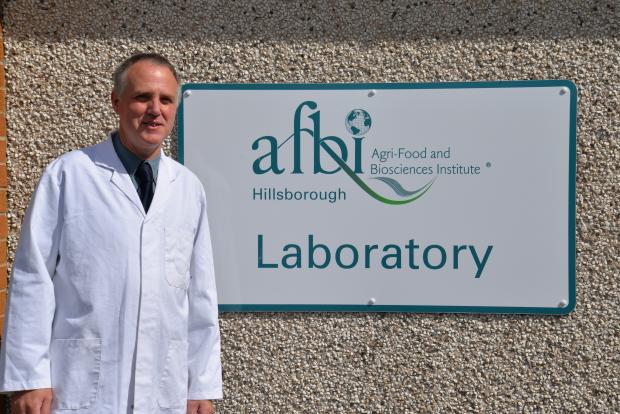Fact number 1:
“Not more about grass Daddy”, was a common response from my children when I was discussing my research for my PhD. I have been analysing grass for over 27 years as part of the laboratory at AFBI Loughgall, within the Grass Breeding programme at Loughgall and now at Hillsborough.
Fact number 2:

Fact number 3:
I grew up on a Beef/Sheep farm where even the Sunday afternoon walk was essentially a discussion of the weather or grass growth. The application of grass management on farms and adaption of analysis was, therefore, a natural farming interest for me. Hence, the importance of grass analysis was easy to understand when determining dry matter yield, digestibility, protein and sugar content of new cultivars of ryegrass for the Grass Breeding programme at Loughgall.
Grass analysis was then enhanced with the utility of Near Infra-red Reflectance Spectroscopy (NIRS), with scanning grass material a much quicker analytical process to the chemical procedures.
Fact number 4:

The smell of freshly cut grass is produced by the aromatic compound cis-3-Hexenal.
Drechslera siccans (the fungal pathogen causing leaf spot of ryegrass) produces two metabolites of note, Siccanin and Drazepinone, an antibiotic and phytotoxin respectively.
Fact number 5:
Some sayings I like using which refer to grass: “the grass is always greener on the other side”, “don't let the grass grow under your feet” and “a snake in the grass”. I will let others decide which I prefer.
Humans have economically relied upon the grass family Poaceae, for feeding domesticated animals for up to 6,000 years and the grains of grasses such as wheat, rice, maize (corn) and barley cereals, feeds 80% of the world’s human population.
Five things you didn’t know about Dr John Archer
Can you cook? If so, what is your speciality dish?
An Ulster fry, everything except black pudding
What is your favourite book?
Far from the Madding Crowd by Thomas Hardy
If you weren’t in your current position what job/career would you like to be doing?
Farm – Sheep and Beef (rear the traditional breeds, Suffolk sheep and Short-horn cattle)
What are your hobbies?
I play golf occasionally, and I enjoy restoring vintage machinery (1958 Fordson Major current project)
What unique fact do we not know about you?
I can drive tracked diggers and have my own rubber tyred 1971 JCB C3 MkII digger, (I reconditioned the engine, brakes, hydraulics myself and learnt how to use it to landscape the garden and drive-way at home plus many other things.
